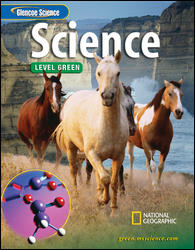1.
A) screw B) lever C) pulley D) wheel and axle 2.
A) the fulcrum B) the arm C) the middle D) the end 3.
A) density B) matter C) motion D) mass 4.
A) It increases. B) It stays the same. C) It stops. D) It decreases. 5.
A) wedge B) lever C) inclined plane D) pulley 6.
A) inclined plane, lever, wheel and axle, and pulley B) wedge, lever, pulley, and wheel C) plane, lever, screw, and wedge D) screw, lever, wedge, and plane 7.
A) a wheel and axle in a vertical position B) an inclined plane wrapped around a cylinder C) a wedge wrapped around a pipe D) a lever wrapped around a pole 8.
A) 4 B) 1000 C) 50 D) 200 9.
A) no force B) the same force C) a lesser force D) a greater force 10.
A) downward B) upward C) along the hallway D) in the opposite direction that you walk 11.
A) lever B) wedge C) pulley D) inclined plane 12.
A) more than 100 percent B) exactly 100 percent C) impossible to calculate D) less than 100 percent 13.
A) pulley system B) machine system C) wheel and axle D) pulley group 14.
A) It stays the same. B) It goes to zero. C) It decreases. D) It increases. 15.
A) wedge and plane B) lever only C) plane and lever D) screw and pulley 16.
A) carrying a box B) pushing against a stationary box C) lifting a box D) doing homework 17.
A) 50,000 J B) 500 J C) 5,000 J D) 50 J 18.
A) wheel and axle B) wedge C) lever D) pulley 19.
A) W = F x d B) W = F + d C) W = F - d D) W = F/d 20.
A) N/m B) N - m C) N + m D) N x m
















